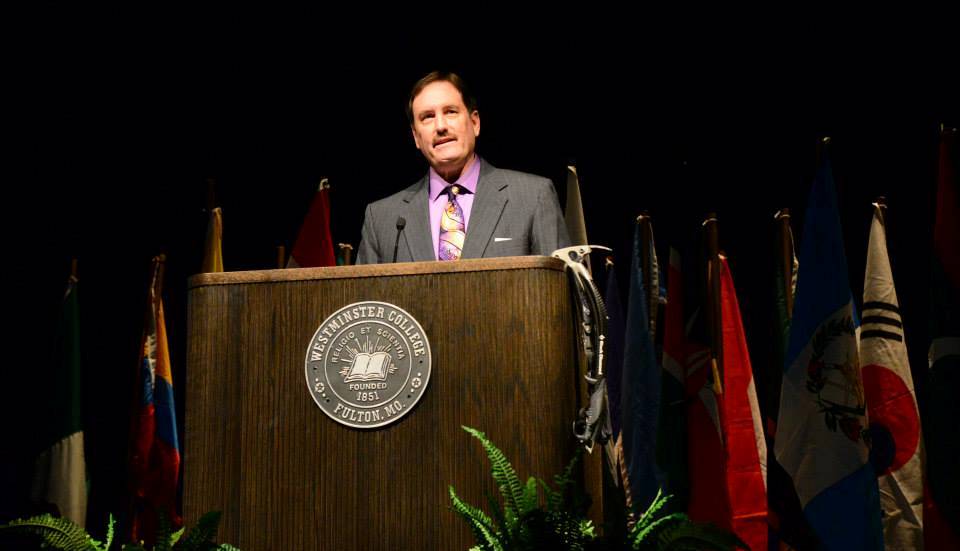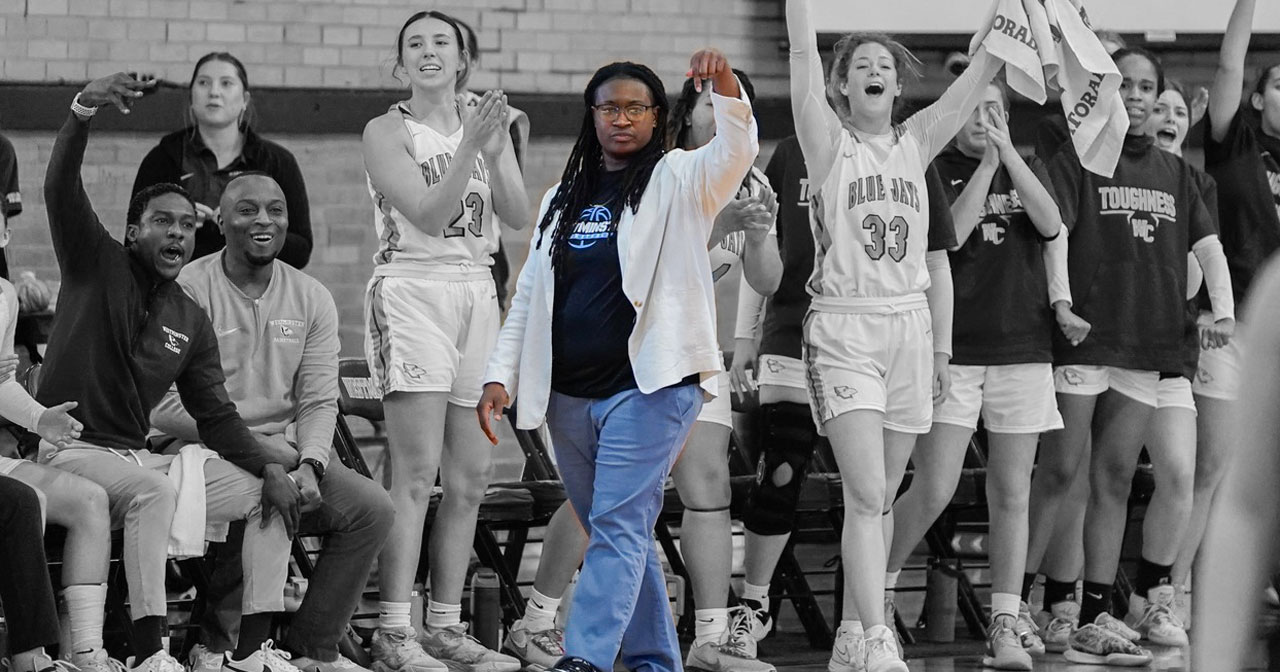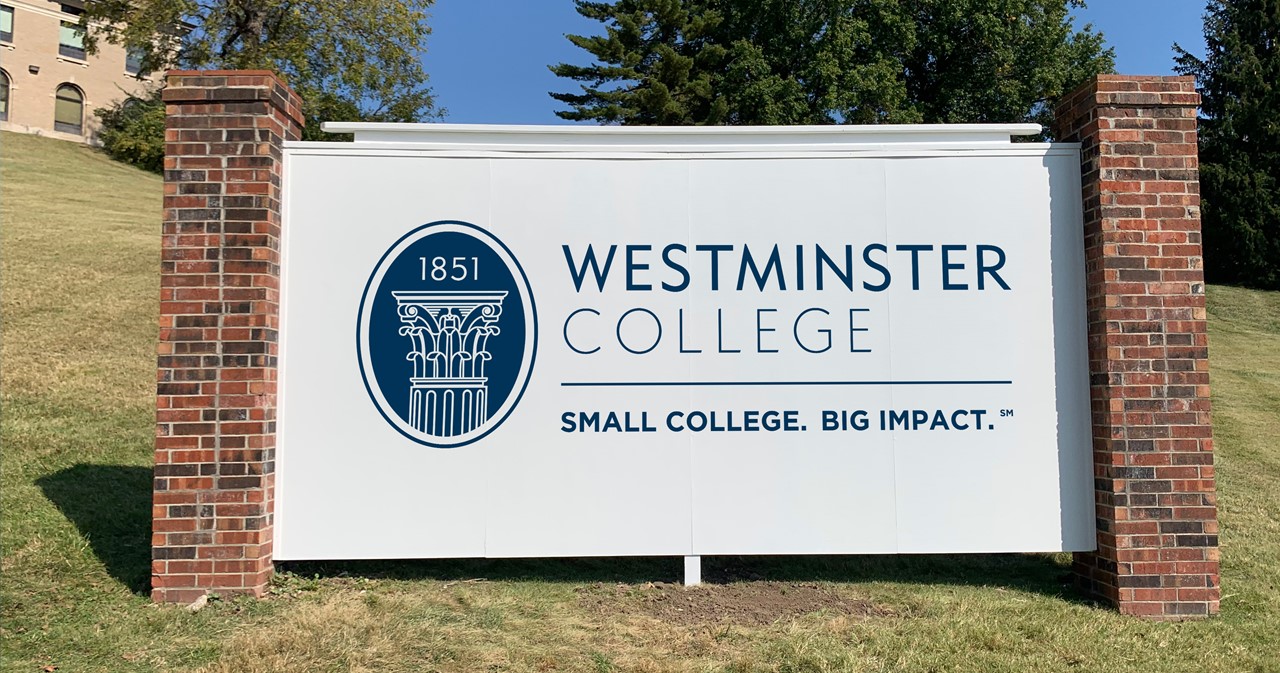Prof. Keith Hardeman is the the Chair of the 2013 Westminster Symposium and Professor of Speech Communication and Chair of the Humanities Division at Westminster College. He delivered these opening remarks at the Hancock Symposium at Westminster College on Tuesday, September 17th.
“President Forsythe often says, it’s a great day to be a Blue Jay. As we begin the Hancock Symposium at Westminster College on Global Sport, it really IS a great day to be a Blue Jay. We identify with our teams. That means for many of you, it’s also a great day to be a Cardinal. And a Chief, and a Tiger, a Royal, a Diamondback, a Hornet, a Bruin, a Kewpie, a Jay, a Ray, an A, a Quaker, a Laker, a Boilermaker, a Fighting Irish and a Fighting Artichoke, a Wildcat, a Tiger-cat, a Bear-cat, a fighting meerkat – ok, that one I made up. Sport is culture and identity, and is unquestionably a fabric of a global community.
It’s only a game right? Ask my daughter what the Hardeman household was like during game 7 of the NBA finals between the Lakers and Celtics three years ago. Ask Dr. Tuthill if it’s just a game when the UConn women are in the NCAA basketball finals. Ask Dr. Brown if it’s just a game when Alabama is on the football field. Sports culminate in the real-life human drama of, as Jim McKay so aptly stated, getting to experience “The thrill of victory” (unless you’re a Cubs fan) “and the agony of defeat.”
Good morning Westminster Community! My name is Keith Hardeman. This morning I have a special empathy for my good friend Professor Cliff Cain, who chaired last year’s symposium on religion and was put in the position of telling you everything there was to know about religion – in 14 minutes or less. I have the added bonus of my great SPE 101 students who are here critiquing me. Today I want to address the descriptor of the Symposium, in that it is “a special academic experience” in the area of global sport. As the chair of this year’s Symposium committee, I’ve encountered a number of people who wonder, are sports academic? In an age when colleges emphasize curricular integrations, higher education has come up with writing across the curriculum, speaking across the curriculum, teaching, ethics and values and technology and reading and languages and Arts across the curriculum, among others. But what if we had “sports across the curriculum”? It’s but another simple connection to be made to the most versatile, applicable, and employable college curriculum of all: the liberal arts. We already offer a handful of classes involving sports. But let me give you a few examples of how, say, an international game such as baseball, among others, could be integrated into various academic disciplines.
I’ll start with the easiest case to make: sports psychology as we already offer a course in this. Golfer Bobby Jones once said, “Competitive sports are played mainly on a five-and-a-half inch court, the space between your ears.” Perhaps those of you who are St. Louis Cardinal fans remember a young pitcher with unlimited talent and a blazing fastball, by the name of Rick Ankiel. Literally, one day he was unhittable, and the next, he was inexplicably unable to throw anything even close to the strike zone. Live arm or not, he permanently lost his ability to pitch. Sports psychologist Dr. Shawn Harvey says problems like Ankiel’s begin with some sort of unexplainable, irrational self-doubt that causes some athletes to hesitate and overthink what has previously been so reflexive over a long period of time. So what makes some athletes mentally tougher than others? Sports psychology might offer some explanations.
What about the favorite class of this campus, statistics? Mark Twain wrote that there are lies, damned lies, and statistics. Sports agent Bob Woolf might agree. He said when he negotiated pitcher Bob Stanley’s contract with the Red Sox, he had statistics demonstrating Stanley was the third-best pitcher in the league. They, on the other hand, had stats showing he was the 60th-best pitcher on the Red Sox!
Traditional statistics of baseball offense are batting average, slugging percentage, and cumulative stats of how many home runs and runs batted in. Today, fantasy sports leagues give stats like OWP, which is Offensive Winning Percentage. It’s the theoretical projected winning percentage of a team comprising of the exact same nine players each game. Want to calculate this? Figure runs created per 27 outs. Divide by the league average of runs per game. Square the result. Divide that figure by 1 + itself. Confusing? Yes, it’s statistics. But it provides a strong element of accurate prediction.
Want baseball and science? Biology students could have quite the semester discussing normal injury patterns associated with baseball. Pitchers predictably have numerous shoulder and elbow problems over the course of their careers. One of the most serious problems involves tearing of the ulnar collateral ligament – or UCL – in the elbow.
In 1974 a show called “The six million dollar man” debuted on television. It was about a “bionic man” whose body, after a life-threatening accident, was reassembled with machinery. That same year, a 31-year-old pitcher named Tommy John suffered a UCL injury, but perhaps he got the first bionic arm. He underwent an experimental surgery that removed a ligament from one elbow to be re-implanted in his pitching elbow, replacing his tattered and torn and, likely, career-ending, UCL. He was given a 1% chance of ever pitching again. But pitch again, he did. His fastball improved. His sinkerball improved. In fact, he won 288 games in his career (164 of them AFTER his surgery), and he pitched in the major leagues until he was 46 years old. Today, this operation is routinely called “Tommy John surgery,” and, according to Johns-Hopkins University Orthopedics, pitchers undergoing it have an 83% chance of regaining original velocity or even improving. In addition, students could study the medical and performance effects of steroids on the human body? Baseball and biology? That’s a course I want to take.
Speaking of steroids, have you ever wondered just how much they actually affect performance? Getting physics into our baseball curriculum might enlighten us. Baseball purists often argue about the effect that performance-enhancing drugs – or PEDs – have on the record books. Barry Bonds, a “suspected” steroid user, currently holds the mark for career home runs at 762. By measuring and comparing bat speed in Bonds’s swings, pre- and post-steroid use, we can determine that PEDs increased his bat speed by nearly one and a half miles per hour. This is enough to add up to 40 feet in travel distance for a baseball because of the additional 20 pounds of muscle Bonds accumulated from steroid use. So we have an equation like this: Bat velocity equals ten times the square root of the mass of the player divided by the mass of the bat plus the mass of the player divided by 81. Physicist Robert Adair wrote a book called “The Physics of Baseball.” His formulas helped us determine that without steroids, Bonds’s home run total could have been reduced by more than 100, given the affected distances of some of his home runs after he began taking PEDs. I want to thank Dr. Stumpe, for helping me with that equation. But I’ll admit I’m much more comfortable with Pete Rose’s explanation of baseball physics: You have a round bat and a round ball. But you have to hit it square.
History can be included with a course in how the global baseball movement impacted society from the 19th century through today. Though the idea rankles some who want to think it’s exclusively American, baseball is obviously a relative of the European games of cricket and rounders, and the 14th-century Russian game of lapta probably has at least a few fingerprints on baseball’s evolution as well. While baseball was commonly played in the mid-19th century, professional baseball as we know it began in the U.S. in 1869, and it wasn’t long before it quickly caught on – everywhere. But since the major leagues didn’t exactly welcome players of various races with open arms, it took a while for fans actually to see some of the best in the U.S. and in the world competing against one another. It was 1947 before African-Americans were able to play Major League Baseball with Jackie Robinson and Larry Doby. It really wasn’t until the 1950s when Latino players entered the major leagues, in spite of incredible talent. Players such as Luis Aparicio, Orlando Cepeda, Juan Marichal, and my favorite player of all time, Roberto Clemente, were not only stars, they are Hall-of-Famers. Japanese players have also shown the world that baseball is a national pastime with them as well. Such a history class could also discuss when women were recruited to play in the All-American Girls Professional Baseball League, which drew large crowds across the Midwest during WWII. The movie “A League of their Own” was based on these teams.
I’ve saved the most important academic discipline for last, and that, of course, would be speech. Yes, among many things, I teach how to use spoken words effectively. Poet Maya Angelou wrote, “Words mean more than what is set down on paper. It takes the human voice to infuse them with shades of deeper meaning.” So who better to study in baseball communication than those voices describing the game for us on radio and television? Successful baseball announcers must be descriptive storytellers. And they have to react quickly to those defining moments in the sport. Such a moment took place in the 1988 World Series between the Los Angeles Dodgers and the Oakland Athletics.
Two of the better announcers in baseball, Vin Scully and the late Jack Buck, were the prime voices of this game. Buck did World Series play-by-play for the national CBS radio broadcast, and Scully did the national NBC telecast. Though both had completely different styles, they were artists when it came to painting pictures with their words.
The Athletics were a vastly superior team to the Dodgers. L.A.’s best player, Kirk Gibson, was injured and was doubtful to play at all against Oakland, lessening the Dodgers’ chances even more. Game 1 was in Los Angeles, and the A’s were clinging to a 4-3 lead in the bottom of the 9th inning. The Dodgers had the game-tying runner at first base but there were two outs.
Dodger manager Tommy Lasorda contemplated his limited options and did the unthinkable – he sent a hobbled, limping Kirk Gibson up to pinch hit against Dennis Eckersley, the best relief pitcher in baseball, down by one run, two outs, bottom of the 9th inning. Because of the extent of his injuries, this would be Gibson’s only plate appearance in the series. It looked to be a very one-sided confrontation, especially when Eckersley threw two quick strikes past Gibson. Gibson’s feeble swings made him look completely overmatched. But what happened next, no one saw coming.
With the count at 3 and 2, Eckersley threw a fastball over the plate. And – as Scully would later say – Gibson crushed it – but with basically a one-handed swing! When the ball flew over the right field fence for a game-winning two-run home run, the partisan crowd exploded into a deafening roar. On the radio, Buck spoke in profound, yet simplistic terms. You’ve all heard the line: “I don’t believe, what I just saw!” He repeated it two more times. It was a line that many announcers have stolen and used over and over since, but it just doesn’t resonate the way it did that October night 25 years ago.
Vin Scully took things in a slightly different direction. Author Ann Elizabeth Berg wrote, “Sometimes the words people don’t say are as powerful as the ones they do.” So after calling the home run, Scully … said … nothing. He took off his headset, and held up the microphone to the frenzied noise of 55,000 Dodger fans – who likely couldn’t believe what they just saw either – for a full 67 seconds allowing the television audience the simulation of actually being there at Dodger Stadium. The crowd was still screaming when he finally broke his own silence with a line for the ages: “In a year that has been so improbable, the impossible has happened!” It’s amazing what can be said in the span of a single sentence that can truly capture the moment.
As a footnote, Both Buck and Scully did telecasts for the National Football League. Scully demonstrated that his words could not only be moving, but also humorous. After a kicker cost his team the game by missing on all four of his field goal attempts, including what would have been the game-winner as time expired, the announcer with the golden voice summed up the kicker’s frustration perfectly. “I’m sure he could just kick himself,” said Scully. “But he’d probably miss!”
Are sports academic? Oh my, yes! From science to world and U.S. history to economics to politics to Math to art to elocution. They’re not only academic, they often serve as life lessons. From football to futbol, baseball to cricket, basketball to team handball, ice hockey to field hockey to la cross, from running races to swimming races to horseraces and nascar races, we could talk into perpetuity about sports across the curriculum and how they tie together a global community. But it’s time to get this show on the road. Before I finish, I’d like to thank the Symposium Committee for their great work. Jim Concannon, Hossam Hashsish, Rob Havers, Kurt Jefferson, Leigh Ann Lutz, Will Megl, Ryan Mullen, Carolyn Perry, and Karen Tompson-Wolf. It has been an honor and a privilege working with you. Thank you ladies and gentlemen. I present to you the Hancock Symposium at Westminster College on Global Sport. Let the games begin!”
Photo courtesy of Capture the Moment
This is the editorial account for Westminster College news team. Please feel free to get in touch if you have any questions or comments.






